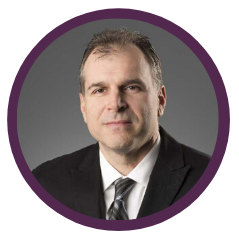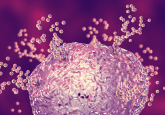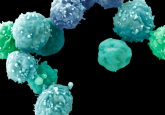Regenerative medicine in urology: ask the experts

In this ‘Ask the Experts’ feature, a panel of international experts share their perspective on current obstacles and future developments facing regenerative medicine in urology.
Urology is the study of the urinary tract and urine production. This encompasses nephrology, which is the study of the kidneys, as well as the bladder, sphincter and male genitalia. While the impact of urological conditions can be severe, the conditions are not always given due prominence because of their non-life-threatening nature.
In this discussion, we’ve collected insights from experts around the world to discuss the development of regenerative medicine in the urology field and what still needs to be done.
Jump to:
- What is the current perception of regenerative medicine in women’s health and urology?
- How might this perception affect patient care and the field in general?
- What are the unmet needs in women’s health that regenerative medicine can address?
- What are the benefits of regenerative medicine technologies for women’s health and urology?
- What are the challenges of developing a cell therapy product in this field?
- What will women’s health and urology look like when regenerative medicines are fully incorporated into our standards of care?
Please introduce yourself and your institution/company?
Ron Jankowski (RJ): My name is Ron Jankowski, and I’m the Vice President of Scientific Affairs at Cook MyoSite (PA, USA). We’re a subsidiary of Cook Group (IN, USA), formed in 2002 to guide the company into the world of cellular technologies. We’re currently investigating our proprietary autologous muscle-derived cells technology for the potential treatment of a variety of muscle related disorders. Our lead indication is in Phase III, looking at autologous muscle-derived cells for female stress urinary incontinence.
Bertha Chen (BC): My name is Dr. Chen and I am a Professor of Ob/Gyn and Urology (by courtesy) at Stanford University School of Medicine (CA, USA). I am a urogynecologist with expertise in pelvic reconstructive surgery and direct the Stanford Urogynecology and Pelvic Reconstructive Surgery Division in the Department of Ob/Gyn. My primary research focus is in the area of extracellular matrix metabolism in pelvic conditions and stem cell regeneration of pelvic floor tissues. My laboratory is funded by the California Institute of Regenerative Medicine (CA, USA) for translational research, applying stem cell technologies for treatment of urinary incontinence.
John Young (JY): I am John S Young, Acting Director of the Institute of Biomedical and Biomolecular Sciences, Associate Head of Innovation and Impact and an Associate Professor at the University of Portsmouth (UK). I run a research lab in translational urology aiming to provide new approaches in the diagnosis and management of lower urinary tract symptoms.
The University of Portsmouth is a modern university known for the quality of its hands-on biomedical education and for research with real-world impact, with a depth and breadth of research into regenerative medicine.
What is the current perception of regenerative medicine in women’s health and urology?
RJ: Currently, I don’t think there’s much of a perception. A lot of women’s health and urology revolves around conditions that are non-life threatening and associated with aging. Unfortunately, that results in a perception that conditions such as incontinence are just a normal thing to be dealt with as one grows older. Furthermore, a lot of women’s health and urology tends to be stigmatized; incontinence is a prime example of that. Those two things combined — normalization and stigmatization — cause a lot of very common disorders to kind of fly under the radar because they’re often underreported due to people not seeking treatment.
BC: Most still consider it experimental. There is a lot of research being done and excitement about the concept of regenerative medicine though.
JY: Regenerative medicine is an important but elusive goal for women’s health and urology. There was great excitement following the seminal publication by Dr Anthony Atala (Wake Forest School of Medicine, NC, USA) and colleagues in 2006 in which they demonstrated the viability of creating engineered bladder tissues from autologous cells seeded on a collagen-polyglycolic acid scaffold. Some 14 years on, this approach and other proof-of-concept developments for regenerative medicine in the urinary tract, are yet to enter mainstream urological practice, demonstrating that many barriers exist in translating even the most pioneering and exciting research. Still, there remains great hope that advances in bioprinting and methods to reprogram a patient’s own cells will together pave the way for implementation of regenerative medicine into urology.
Jump to
- What is the current perception of regenerative medicine in women’s health and urology?
- How might this perception affect patient care and the field in general?
- What are the unmet needs in women’s health that regenerative medicine can address?
- What are the benefits of regenerative medicine technologies for women’s health and urology?
- What are the challenges of developing a cell therapy product in this field?
- What will women’s health and urology look like when regenerative medicines are fully incorporated into our standards of care?
How might this perception affect patient care and the field in general?
RJ: Well, I think it follows logically that a lack of perception leads to lower funding for research compared to a lot of other common conditions. Incontinence and other conditions surrounding women’s health and urology are quite common, but they don’t get the same amount of attention that many other common conditions get. This, in turn, leads to fewer research opportunities and our current situation, where standards of care are often relegated to management of symptoms instead of solutions that identify and fix root causes.
BC: My impression is that patients are also excited about the potential of regenerative medicine.
JY: Patient care remains the number one priority of urologists. The fact that many of my colleagues are also highly research active reflects a strong desire to develop better interventions for patients, and progress basic science through clinical evaluation to implementation. Ultimately, I don’t think that patient care is affected by perceptions of regenerative medicine but when the technology is ready, I suspect that there will be many willing to use it for suitable patients.
What are the unmet needs in women’s health that regenerative medicine can address?
RJ: Right now, the field of women’s health needs an alternative to the permanent implantation of synthetic materials. In 2019, we saw the US FDA (MD, USA) order the manufacturers of surgical meshes, used in transvaginal repair of pelvic organ prolapses, to stop selling and distributing those devices in the US. That was a direct result of the risks posed by having a permanently implanted synthetic device in the pelvic region.
BC: Regenerative medicine can address urinary tract and pelvic floor disorders where there is tissue deficiency due to injury or aging. Current synthetic materials used for tissue strengthening or replacement have many undesirable side effects such as excessive scaring, which can result in chronic pain, or the migration of the implanted material into neighboring tissues.
JY: There are a large number of incidents (in both sexes) where it is necessary to replace tissue that’s been removed (e.g. along with a bladder tumor in a partial cystectomy) or to enlarge the bladder (cystoplasty). The idea that scaffolds could be seeded with the body’s own cells is attractive, because it potentially reduces the likelihood of organ rejection. There are issues currently with cystoplasty, in that the tissue used to increase the bladder’s size – usually from the ileum or colon – does not become functioning bladder. In this case, regenerative approaches are a highly attractive option.
What are the benefits of regenerative medicine technologies for women’s health and urology?
RJ: Well, the intent of regenerative medicine is, of course, to regenerate and heal tissues that are causing problems in the body. I think regenerative medicine will be greatly beneficial in providing biologic solutions that address root causes and heal tissues in sensitive areas, such as the pelvis, where these synthetic implants are commonly used.
In addition, there are a lot of conditions surrounding women’s health that don’t have any pharmaceutical treatment options. The alternative, in many cases, is surgery, and a lot of these surgical procedures have high morbidity associated with them for the treatment of a non-life-threatening condition. That doesn’t yield a very good risk/benefit profile. So, I think regenerative medicine will be particularly useful in coming up with less invasive, less risky solutions to these conditions where surgery is the current standard of care.
BC: Pelvic tissues tend to weaken with aging and day-to-day use leading to urinary symptoms and pelvic floor dysfunction. Regenerative medicine could provide methods to restore function to these debilitated tissues.
JY: While cystoplasty has many significant advantages for patients – in increasing bladder capacity and providing a degree of normality – there are those for whom urinary retention and other side effects become issues. Tissue grown from a patient’s own autologous cells, seeded on a collagen-polyglycolic acid scaffold, may likely fare better, becoming innervated and ultimately fully incorporated into the patient’s own bladder.
What are the challenges of developing a cell therapy product in this field?
RJ: I would say that this particular field suffers from a lack of pharmaceutical drug development activity, meaning that the field hasn’t had enough multicenter, randomized, placebo-controlled trials. That ends up being a detriment to cell therapy development because we follow the same IND pathway that pharmaceuticals do. When you don’t have a lot of precedents to base your studies on, that can make things challenging.
Also, as I touched on before, this field is dominated by non-life-threatening conditions. That poses two challenges: first, it means there is very little tolerance for risk, which is a challenge. Second, it makes it more difficult to access expedited regulatory pathways that are often reserved for life-threatening conditions.
BC: There are many challenges facing the adoption of cell therapies: first is the issue of determining the best type of cell for the therapy (which is both efficacious and safe).
Second, you have to find a relevant animal model that can be used to test the therapy. Research funding can also be hard to obtain. This is because there are few grants large enough to cover the cost of conducting studies for cell therapy products. Developing a cell therapy requires many different types of studies, which include studies to verify efficacy, safety, and reproducibility. These studies are first done in animals and then confirmed with human clinical trials.
Even if funding is obtained, the US FDA approval process is long and costly and few companies are willing to commit the resources required to obtain FDA approval.
JY: There are many barriers; most of which are not well described in the literature. Most clinical facilities in the UK are not set up to harvest and process a patient’s cells, let alone seed a scaffold in order to provide engineered tissue for implantation.
What will women’s health and urology look like when regenerative medicines are fully incorporated into our standards of care?
RJ: When regenerative medicines are fully incorporated, women’s health and urology will have more solutions that address root causes, and physicians will have more tools in their kit to administer the appropriate treatment option to any given patient. I also think there will be more awareness about some of these conditions that go undiscussed (or underdiscussed), because we’ll have a greater number of ways to address those conditions.
BC: Ideally, one would see more efficacious treatments with fewer side effects. Most importantly, a significant improvement in quality of life for the patients due to true tissue regeneration rather than synthetic implants.
JY: Integration of regenerative medicine need not require significant infrastructure or wholesale changes in practice. A small specialist facility would receive material derived from a patient and then process this to separate the different cells. These would be grown and then seeded onto a scaffold. The tissue would then be ready to be implanted back into the patient.
Jump to:
- What is the current perception of regenerative medicine in women’s health and urology?
- How might this perception affect patient care and the field in general?
- What are the unmet needs in women’s health that regenerative medicine can address?
- What are the benefits of regenerative medicine technologies for women’s health and urology?
- What are the challenges of developing a cell therapy product in this field?
- What will women’s health and urology look like when regenerative medicines are fully incorporated into our standards of care?
Meet the experts
 Ron Jankowski, Vice President of Scientific Affairs, Cook Myosite (PA, USA)
Ron Jankowski, Vice President of Scientific Affairs, Cook Myosite (PA, USA)
Ron Jankowski has been with Cook MyoSite since its founding and has extensive experience in translational medical and biologic product development. He earned doctoral degree in bioengineering from the University of Pittsburgh (PA, USA) and has authored and coauthored numerous peer-reviewed manuscripts, reviews, book chapters, and abstracts involving a wide variety of cellular-based applications. He leads the development programs for current products, investigates new indications for existing products, and evaluates the formation of strategic research partnerships to expand the Cook MyoSite product pipeline with a focus on translational research.
 Bertha Chen, Professor of Ob/Gyn and Urology, Stanford Medical School (CA, USA)
Bertha Chen, Professor of Ob/Gyn and Urology, Stanford Medical School (CA, USA)
Bertha Chen is Professor of Obstetrics/Gynecology and Urology (by courtesy) at Stanford University School of Medicine. She is an urogynecologist with expertise in pelvic reconstructive surgery and she directs the Stanford Urogynecology and Pelvic Reconstructive Surgery Division in the Department of Obstetrics/Gynecology. Her primary research focus is in the area of extracellular matrix metabolism in pelvic conditions and stem cell regeneration of pelvic floor tissues. Her laboratory is funded by the California Institute of Regenerative Medicine (CA, USA) for translational research applying stem cell technologies for treatment of urinary incontinence.
 John Young, Acting Director of the Institute of Biomedical and Biomolecular Sciences, University of Portsmouth (UK)
John Young, Acting Director of the Institute of Biomedical and Biomolecular Sciences, University of Portsmouth (UK)
Following an undergraduate degree in biology at the University of York (UK) and a Ph.D. in Neuroscience at the University of Cambridge (UK), Young undertook post-doctoral work at the University of Oxford (UK), University of Nevada Reno (USA) and the University of Surrey (UK). He was then awarded an Age UK (London, UK) Research Into Ageing and Rosetrees Trust Research Fellowship before joining the University of Portsmouth as a Senior Lecturer in Biomedical Science where he has led projects towards the discovery of urinary biomarkers for the diagnosis of bladder diseases; currently being developed into a point-of-care diagnostic test.
Disclaimer
The opinions expressed in this interview are those of the interviewees and do not necessarily reflect the views of RegMedNet or Future Science Group.





